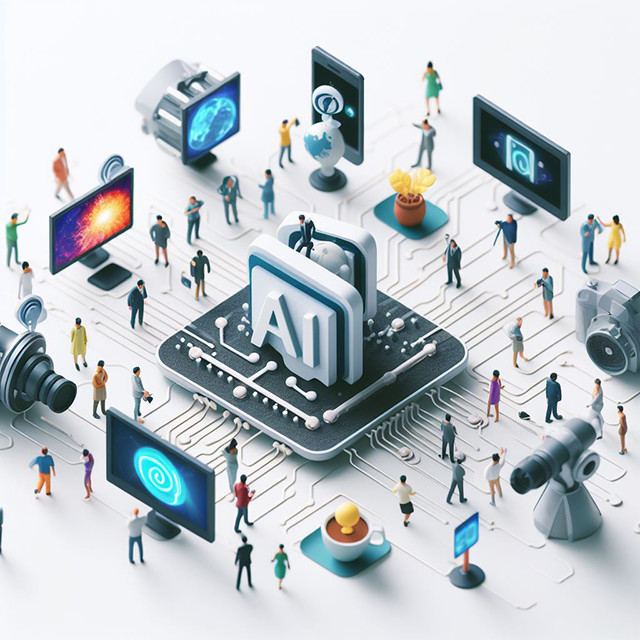Demystifying Transformers and Hugging Face through Interactive Play
What Are Transformers and How Do They Work?
Transformers are taking the world of AI by storm. Developed by researchers at Google in 2017, these novel neural network architectures are now driving rapid advances in natural language processing, computer vision, speech recognition, and more.
Transformers have become one of the most important breakthroughs in deep learning in recent years. So what exactly are Transformers, and why are they so revolutionary? In this article, we'll break down the basics of how Transformers work, explore the incredibly popular Hugging Face Transformers library, and show you how you can start tinkering with Transformers yourself in the interactive Transformers Playground.
At the core, Transformers use self-attention to understand relationships between words in a sentence. This gives the model a sense of context and structure critical for tasks like translation.
Transformers are trained on massive datasets like Wikipedia and BookCorpus. The model looks at thousands of real-world examples of language to learn relationships between words and how they convey meaning.
Once trained, Transformers develop a deep understanding of the structure and nuances of human language. This allows them to achieve state-of-the-art results on tasks like translation, text generation, summarization, and question answering.
Transformer Components
Transformers contain two main components:
- Encoder - Encodes the input text into an abstract representation.
- Decoder - Uses the encoded representation to predict an output.
These consist of stacked self-attention and feedforward layers to refine the contextual representations.
- Self-Attention
- The input text is split into tokens, usually words or subwords.
- For each token, the model calculates attention scores against all other tokens.
- The scores are turned into probabilities using softmax.
- These attention weights are multiplied with value vectors to aggregate context.
- This produces the token's contextual representation.
Doing this for every token gives the model global context from the full sequence. The representations capture nuanced relationships between all parts of the text.
- Multi-headed attention
Runs self-attention multiple times to focus on different aspects.
- Feedforward networks
Help refine the contextual representations.
Pretraining and Finetuning
Most Transformer models are pretrained on massive text corpora. Pretraining exposes them to a huge vocabulary and diverse examples of language.
The pretrained models can then be finetuned on downstream tasks using much smaller datasets. This transfers their general language abilities while adapting to new objectives.
Now that you understand the basics of Transformers, let's see how Hugging Face makes them easy to use.
Hugging Face Transformers
So Transformers rock, but how can you actually use them? This is where Hugging Face comes in.
Hugging Face is an AI community best known for their open source Transformers library. The Hugging Face Transformers repository on GitHub has been starred over 100,000 times, indicating its popularity.
Hugging Face Transformers provides thousands of pretrained Transformer models for anyone to use. This covers models for language, vision, audio, and more. Here are some examples:
- BERT: Bidirectional Encoder Representations from Transformers, for understanding text
- GPT-2: Improved version of OpenAI's Generative Pre-trained Transformer for natural language generation
- RoBERTa: More robustly optimized BERT model
- DistilBERT: Smaller and faster version of BERT
- Vision Transformer (ViT): Transformer adapted for computer vision
The models are preconfigured with weights from training on massive datasets. This means they already "understand" language structure and context.
You can fine-tune these models for downstream NLP tasks like text classification, named entity recognition, question answering, and more. This breakthrough enables anyone to leverage Transformer power with minimal code using Hugging Face's clean API.
Hugging Face also hosts pretrained models you can use via APIs, datasets, metrics, and other NLP resources. The simple interface and community support make it easy for beginners to apply Transformers.
Getting Hands-On with the Transformers Playground
Now that you know the basics of Transformers and Hugging Face, it's time for the fun part - playing with them yourself!
Hugging Face Spaces allows creating apps powered by Transformers. The Open LLM Leaderboard is one such demo app. Here is a beginner's guide to Hugging face spaces
The Transformers playground at Spaces built by Hugging Face provides an interactive web demo to showcase Transformers in action through ML apps.
Here are some of the cool things you can try out in Hugging Face:
Text Generation
You can type a sentence prompt and get a Transformer like GPT-2 to generate a completion in various styles. For example:
Prompt: "The fox jumped over the"
Completion: "overgrown bush and scampered into the forest."
Translation
Try translating text between languages like English, Spanish, German using pretrained translation models.
Text Summarization
Paste a long text passage and watch Transformer models summarize it into a concise paragraph.
Question Answering
Give the model a context paragraph and ask it natural language questions to test its understanding.
Sentiment Analysis
Analyze the sentiment of movie reviews as positive or negative.
Named Entity Recognition
Identify people, places, organizations and other named entities in text.
Text Classification
Classify the topic of texts into categories like sports, politics, technology etc.
The interactive demos provide informative visualizations to help you better understand what's going on under the hood. You can tweak model parameters, analyze attention weights, compare outputs, and more.
The playground makes it simple for beginners to get hands-on with building blocks of Transformers without needing to code. It's both educational and fun!
Going Deeper with Transformers
We've only scratched the surface of the exciting capabilities of Transformers. Here are some resources to level up your skills:
- Learn the mathematical building blocks of Transformers on Coursera's Natural Language Processing Specialization taught by deep learning experts.
- Check out Forrest Knight's Transformer Networks video for an intuitive overview.
- Jay Alammar's The Transformer .
- Code along with Transformer tutorials on Hugging Face's YouTube channel.
- Browse the Hugging Face model hub to pick pretrained Transformers for your own NLP projects.
- Join the Hugging Face forum to engage with the Transformer community.
Transformers are an incredibly versatile technology that is disrupting many fields. Apply what you've learned here to start leveraging their power for real applications today! The supportive Hugging Face ecosystem makes it more accessible than ever to put these powerful models into action.
Transformers have revolutionized the field of natural language processing, enabling powerful language understanding and processing capabilities. With Hugging Face, working with Transformers has become more accessible and intuitive, allowing developers and researchers to leverage pre-trained models for various NLP tasks.
Before you know it, you'll be developing Transformer-based solutions to make a difference in Barcelona and beyond! The future is transforming!.



Comments
Post a Comment